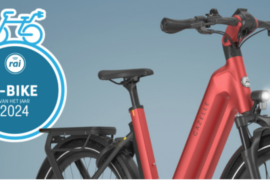And some not so frequently asked eBike questions…
Welcome to our detailed FAQ guide where you’ll find answers to all of your questions about electric bikes! Whether you’re a new buyer or an experienced rider, these insights will help you make the most of your e-bike experience. If you don’t see the answer simply contact us here for a quick response.
Basic Questions
What are electric bikes? Electric bikes, or e-bikes, are bicycles equipped with an electric motor that assists with pedaling, making it easier to cover longer distances and climb hills with less effort. Perfect for both urban commuting and off-road adventures, e-bikes are a sustainable alternative to traditional vehicles.
What features should I look for in an electric bike? When choosing an e-bike, consider the battery capacity, motor type (hub vs. mid-drive), frame material, weight, brake type, and whether it includes features like integrated lights, a display screen, or advanced gear systems. Prioritize features based on your typical riding terrain and usage habits.
Are electric bikes worth it? Absolutely! E-bikes offer a fantastic return on investment by providing a cost-effective, environmentally friendly, and health-conscious alternative to driving, especially for daily commutes and moderate distances.
How fast do electric bikes go? In the UK, e-bikes are regulated to assist up to 15.5 mph (25 km/h). However, you can still pedal faster using your own power, with the motor ceasing assistance once this speed is reached.
What is the range of an electric bike? E-bike range can vary widely but generally falls between 25 to 70 miles per charge, depending on the motor efficiency, battery capacity, rider’s weight, terrain, and riding style.
Does the battery recharge when I pedal my electric bicycle? While most e-bikes don’t recharge significantly through pedaling, some models feature regenerative braking which recovers a small amount of energy when braking, although the overall impact on battery life is minimal.
Are there any UK laws I need to be aware of when riding an e-bike? Yes, in the UK, e-bikes must have a motor output no greater than 250 watts and cannot provide assistance above 15.5 mph. Riders must be at least 14 years old, and the bike must have functioning pedals. Throttles are also permitted under current regulations.
Are electric bikes legal to ride? Electric bikes that comply with specific conditions such as having a maximum motor power of 250 watts and no assistance above 15.5 mph are legal in the UK. No license or registration is required, making them an accessible option for many.
Advanced Questions
How do I get the best performance from my electric bike battery? Maximize your battery’s performance by keeping it fully charged, avoiding extreme temperatures, and using the motor conservatively. Regularly maintaining your e-bike also ensures optimal battery health.
How are hub gears different from other gears? Hub gears are contained within the wheel hub, offering smooth operation and reduced maintenance compared to traditional derailleur systems. They’re ideal for riders looking for a durable, low-maintenance solution.
What tyre pressures do e-bikes require? Tyre pressure for e-bikes should be adjusted according to rider weight and terrain. Typically, pressures range from 40-70 PSI. Check your tyre sidewalls for the manufacturer’s recommended pressure levels.
How do I remove my electric bike’s wheels if it has a hub motor or mid motor? Removing wheels on an e-bike requires disconnecting the motor cable (for front wheels with hub motors). Rear wheel removal varies depending on the gear system but generally involves more steps than non-motorized bikes.
Why should I opt for a Gates belt drive on my electric bike? A Gates belt drive system offers a quieter, cleaner ride with less maintenance required compared to traditional chains. This is particularly beneficial for urban riders or those looking for a low-maintenance biking solution.
After how many miles should I service my electric bike? It is recommended to service your e-bike every 500 to 1000 miles or at least once a year to ensure all components are functioning correctly and safely.
Can a normal bike shop service my electric bike? Many bike shops are equipped to service e-bikes, but it’s important to check if they have specific expertise in electric components like batteries, wiring and motors. If you have an electronic issue you probably need to seek out an electric bike specialist.
Can I share an electric bike if we are different heights? Yes, most e-bikes come with adjustable seats and handlebars to accommodate riders of different heights comfortably. Several Gazelle models are particularly good for sharing due to their tool free adjust ability.
Can I fit a child seat onto an electric bike? Yes, many e-bikes are compatible with both clamp-on and click-in/out child seats. Ensure the bike frame and design are suitable for the added weight and balance requirements of a child seat. You can always contact us here for advice.
Will my pannier bags fit an e-bike? Most standard pannier bags are compatible with e-bikes. However, verify the weight limit and attachment points on the bike’s rack to ensure compatibility. Additionally, for electric bikes designed to carry heavier loads, reinforced racks might be necessary.
Why are folding pedals a good option on an e-bike? Folding pedals enhance the portability and storage convenience of an e-bike, making them ideal for commuters who may need to store their bikes in small spaces or transport them in a car.
Can I tow a trailer with an electric bike? Yes, towing a trailer with an e-bike is feasible. Make sure to check the manufacturer’s specifications for weight capacity and compatibility to ensure safety and functionality.
When should I oil my electric bike chain? Regular maintenance, including oiling the e-bike chain, should occur every 100-150 miles or more frequently if you often ride in wet or dirty conditions to ensure smooth operation and prevent wear.
Can I take my electric bike on public transportation? The ability to take an e-bike on public transportation varies by location and provider. It’s often allowed if the bike meets specific folding or size requirements, especially during non-peak hours.
This FAQ not only answers common queries but also provides detailed insights into the care and legal aspects of owning an electric bike in the UK. Regular updates and additional information can be found by visiting our main website or contacting our customer service for personalised advice.




